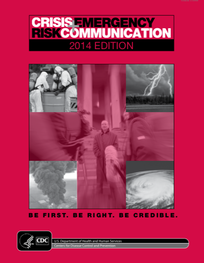|
Note: Deborah Hudson, my fellow IABCLA board member, wrote the following piece for the chapter blog and I wanted to share. I serve as the group's vice president/president-elect.
From the article, I took a run at the CDC website to find what they had to say about communications emergencies. I found a 460-page manual for a course titled Crisis Emergency and Risk Communication. Published in 2014, the social media section may seem a little dusty, but even the table of contents gives a sense of the thorough and practical guidance available for communicators. There’s something reassuring to know the course was built by people who have seen devastating emergencies and crises before and have field-tested their response.
Some of the things I am taking away can be put on a wallet card: Four ways people process information during a crisis: o We simplify messages. o We hold on to current beliefs. o We look for additional information and opinions. o We believe the first message. The six principles of effective crisis and risk communication: o Be first. o Be right. o Be credible. o Express empathy. o Promote action. o Show respect. Yes, in many regards it’s basic stuff. But for me that’s the just ticket during these overwhelming times.
0 Comments
Your comment will be posted after it is approved.
Leave a Reply. |
AuthorI'm Eli Natinsky and I'm a communication specialist. This blog explores my work and professional interests. I also delve into other topics, including media, marketing, pop culture, and technology. Archives
July 2024
Categories |

 RSS Feed
RSS Feed